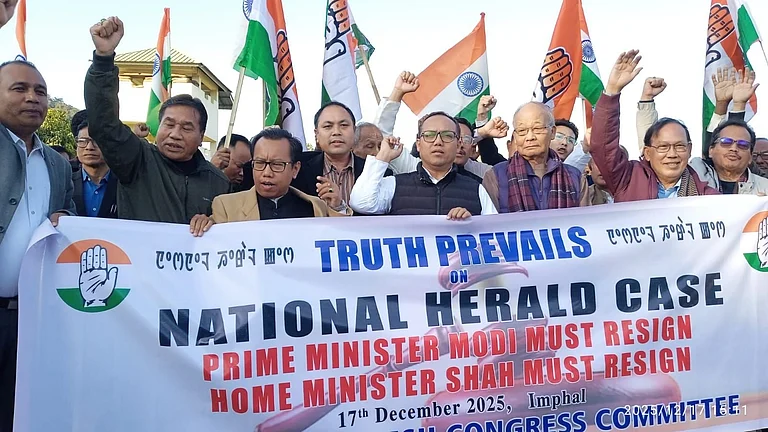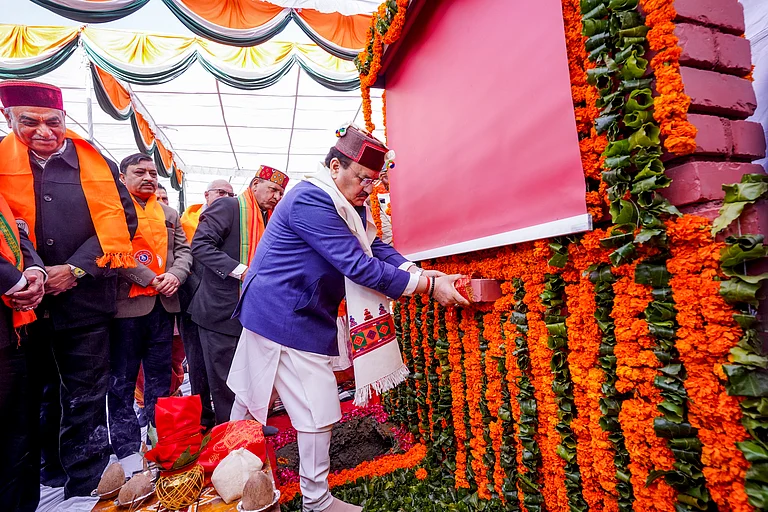Walk in the lanes of any village in Haryana and there are a few names that keep resurfacing among voters. Since the state was carved out of united Punjab in 1966, in most of the Assembly elections, Haryana has voted among a few rulers and their clans – Bansi Lal, Devi Lal, Bhajan Lal, Bhupinder Singh Hooda – with the addition of Manohar Lal Khattar since 2014.
These clans remain significant in the northern state in every election. The vote base is largely divided into two camps – Jats and Dalits – that form the majority of Haryana’s population, with the former dominating the state’s politics most of the years. The Jats are the largest community in the state with 27 per cent population. Their dominance can be gauged by the fact that in 33 out of the 58 years of Haryana’s existence, the state has had a Jat chief ministerial face. However, they are not a majority community. As a result, it is the non-Jat vote that plays a pivotal role in the poll outcome.
The Jat vs non-Jat factor
The Jats in Haryana have historically voted for Hooda’s Congress and the Devi Lal and Bansi Lal clans. The Congress further appealed to other communities within the Scheduled Castes – particularly the Chamar community – that constitute 21 per cent of the state’s population. Still, the Jat-centric politics dominated the Haryana elections until 2014.
The political dynamics changed when in 2014 Lok Sabha elections where the BJP, driven by a Modi wave, propelled to unprecedented success. Cut to a few months later, a non-Jat leader from the BJP, Manohar Lal Khattar, came to power in the state assembly. Not getting the support of the Jat community, the BJP relied on strategic alliances with other communities.
The party played on garnering support from the ‘upper’ castes population of Haryana – Brahmins, Banias, Punjabi Aroras, and Khatris – the Other Backward Classes (OBCs) such as Ahirs/Yadavs, Gurjars, and Sainis, and sub-castes like Valmikis and Dhanaks to counter the Congress’ influence on the Chamar community.
Besides the BJP and Congress – the main rivals in the Assembly elections – the regional parties may emerge as power brokers and play a key role in the government formation if no single party achieves majority.
The Indian National Lok Dal (INLD) and the Jannayak Janata Party (JJP), traditionally rely on their rural and Jat support bases as they lack substantial organisational presence and cadres in urban sectors. However, in the 2019 Assembly polls, JJP had emerged as the kingmaker and chose to go with the BJP to form government in the state.
The two parties are also attempting to consolidate non-Jat votes by forming alliances – INLD with Bahujan Samaj Party (BSP) and JJP with Chandrashekhar Azad’s Azad Samaj Party (ASP). Historically, both JJP and INLD have only fought on Jat support and the Dalit vote base has not received any attention by either in the past.
Raging social movements
While the anti-incumbency factor has emerged as the saffron party’s biggest bane ahead of the polls this year, it is the Jat sentiment which is hurt the most. The anger among the community grew in the last few years owing to frustration around three factors – kisan, jawan and pehelwan (farmer, soldiers and wrestlers), in addition to issues like restoration of the old pension scheme and rising unemployment.
According to Rohtak-based senior journalist Sat Singh, more than the Jat-non-Jat debate, it is te anti-incumbency sentiment affecting the BJP’s hold in Haryana this time. “The people have already tried out this government for 10 years but the BJP has not lived up to its promises. Inflation, unemployment, farmers, and Agniveer recruitment are issues that affect the population of pan-Haryana and especially the rural segments. That is where the BJP will lose the most,” he says.
Further, by nominating an OBC chief ministerial candidate, the BJP is playing safe and using its non-Jat consolidation tactic to gain a third term. Just months before the Lok Sabha polls, the party replaced Khattar from chief ministerial post and appointed Nayab Singh Saini, who belongs to the Saini community.
On the ground, the disgruntlement persists as the sentiment is still that Saini is “Khattar's B-team”, as a shopkeeper from his constituency, Ladwa, says. The government “will be remote-controlled from Delhi while they appoint a new face here”.
“People can see how the BJP has divided the Jat vs non-Jat votes to counter Congress’ stronghold but mere games will not get them votes. The sentiment largely is that they have not done any work on the ground,” says Singh.
Infightings
Haryana, the state where the expression “Aya Ram, Gaya Ram” originated in 1967 when Gaya Lal shifted party allegiances thrice in a single day, it still holds true to this day. Many infightings and factions were reported among the BJP and Congress in the run-up to the Assembly polls, leading to changes in the political landscape. Several leaders who were with the BJP are now fighting as Independents, whereas others have switched over to other parties.
The latest turncoat was former Sirsa MP Ashok Tanwar who joined the Congress at Rahul Gandhi’s rally in Mahendragarh district on Thursday – two days before the polls – dealing a major setback to the BJP. Interestingly, he was seen endorsing the BJP candidate in Safidon assembly constituency just hours before joining the Congress camp. Karan Dev Kamboj, a former state minister and prominent OBC leader, defected to the Congress weeks before the polls after being denied a ticket, seemingly exposing dissent within its OBC leadership of the party.
The party also expelled 6 of its leaders, including former minister Ranjit Chautala and former MLA Devendra Kadyan over alleged factionalism and their decision to contest the polls as Independents.
Meanwhile, not all is hunky dory for the Congress. A rebellion started brewing in Congress soon after the first list of candidates with leaders including Kapoor Singh Narwal, Jeeta Hooda, and Rajesh Joon quitting the party. Thirteen leaders have been expelled from Congress in the last week for six years over ‘anti-party activities’.
Congress, which has yet to declare a CM face in Haryana, is also witnessing internal challenges with visible divisions in the party’s state leadership. Key figures like Bhupinder Singh Hooda, Kumari Selja and Randeep Singh Surjewala – the three potential chief ministers from the party – have been conducting separate rallies while the party attempts to present a united front to effectively mobilise the support of different communities.
While Hooda has denied allegations of any factionalism, it will be interesting to see how this plays out.





























